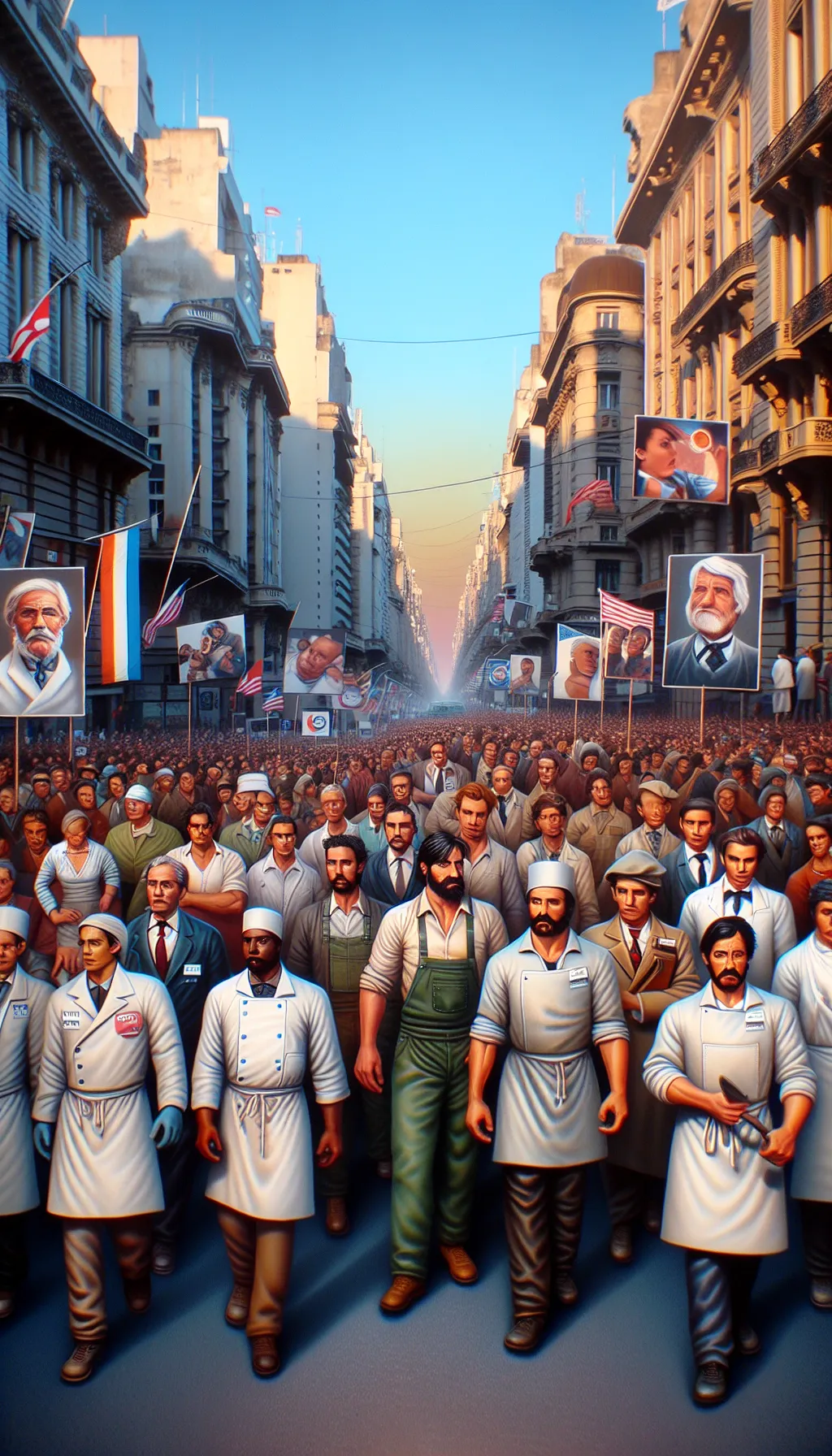Argentina – The Dawn of Labor Rights: Argentina's First Workers' Day - 1891
TLDR;
- Event: On May 1st, 1891, Buenos Aires witnessed Argentina’s first major International Workers’ Day, marking a pivotal moment in the labor rights movement.
- Causes: Inspired by global labor movements and led by anarchist and socialist immigrants, workers demanded an eight-hour workday, better conditions, and fair pay amidst rapid industrialization.
- Impact: Although immediate reforms were slow, the event laid the foundation for future labor rights advancements in Argentina, with significant reforms achieved in the 1920s and 1930s.
- Legacy: The 1891 demonstration remains a symbol of solidarity and the ongoing struggle for workers’ rights, highlighting the importance of collective action.
–
Story
The streets of Buenos Aires were alive with a fervor never seen before. On May 1st, 1891, the air was thick with anticipation as thousands of workers, clad in their work clothes, gathered to make history. This was not just another day; it was the first major International Workers’ Day celebration in Argentina, a bold declaration of unity and strength in the fight for labor rights.

The late 19th century was a time of rapid industrialization, and with it came the exploitation of workers. Long hours, meager wages, and unsafe working conditions were the norm. But the winds of change were blowing across the globe, and Argentina was no exception. Inspired by the labor movements in Europe and the United States, and significantly influenced by anarchist and socialist immigrants from Spain and Italy, Argentine workers were ready to stand up and demand their rights.
As the sun rose over the city, banners were unfurled, and voices joined in unison, chanting for an eight-hour workday, better conditions, and fair pay. This was more than a protest; it was a celebration of solidarity and a call for justice. The energy was palpable, and the message was clear: the workers of Argentina would no longer be silent.
This day marked a turning point in the labor movement in Argentina. While it was a milestone, major labor reforms, such as the eight-hour workday, would take decades to materialize, not coming until the 1920s and 1930s. The courage and determination of those who marched on that historic day, alongside the anarchist and socialist immigrant organizers, laid the groundwork for future generations.
The legacy of May 1st, 1891, lives on, reminding us of the power of collective action and the importance of standing up for what is right. The struggle for workers’ rights continues, but the spirit of those early pioneers remains a guiding light.
–
| Would a different approach to the labor movement in 1890 have changed the course of workers’ rights in Argentina? |